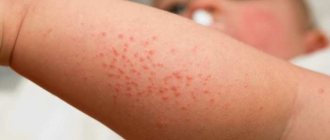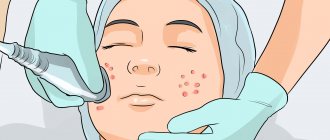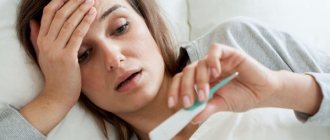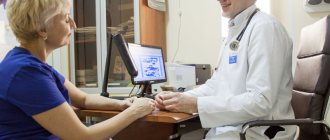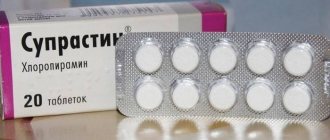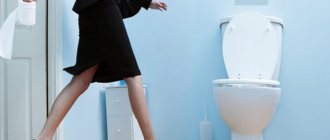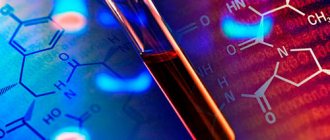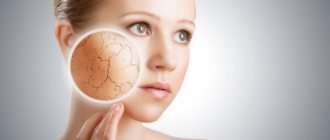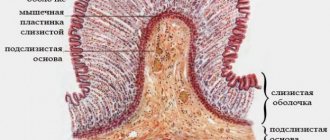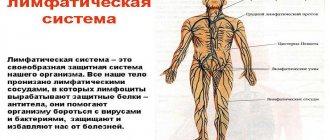Acne, pimples, rashes and skin lesions of various types are a problem not only for teenagers, but also for many adults. All skin problems can be combined into one large group - acne. The lesions appear as black spots and pustules. In addition, it looks unsightly, can also cause serious problems and indicates diseases inside the body.
Rashes occur on the back, chest, but more often on the face. The main cause is increased oily skin. However, poor nutrition, unfavorable environmental factors, genetics, and hormonal disorders influence to no less extent.
Whatever the reason for the development and whatever type of rash occurs, treatment of acne on the face should be comprehensive and immediate. Moreover, there are many methods of home, medicinal and cosmetic treatment. But, before treating the problem, you need to understand the cause of its occurrence.
Reasons for appearance
Acne is called by many “the second disease of dirty hands.” However, many factors can be the cause, and dirty hands will only aggravate an existing problem. Hormonal disruptions are possible, due to a number of circumstances, and non-hormonal ones, depending on the functioning of the body.
Non-hormonal causes of acne
- Genetic predisposition (more often in men). The work of the sebaceous glands is inherent in nature; you only need to properly monitor a certain skin type.
- Poor hygiene. For oily skin types, it is highly recommended not to wash your face more than twice a day, so as not to dry out the skin and cause the sebaceous glands to work faster, which will lead to acne. In addition, it is advisable to use special products for oily types. It would be a good idea to use antibacterial tonics and washes.
- UV rays. Many people mistakenly believe that the sun or solarium can literally “dry out” acne. However, tanning only masks the problem. Excess sunlight, on the contrary, provokes increased activity of cells that “try to get rid” of ultraviolet radiation.
- Malfunctions of the endocrine system, which are most often caused by stress and depression. Less nerves means less acne. We can say that acne is directly related to the emotional background.
- Incorrect functioning of the gastrointestinal tract. The main reason is an incorrect, unbalanced diet. As a result - acute, then chronic gastritis, stones, dysbacteriosis and acne.
Hormonal reasons
For the first time, you can “meet” hormonal imbalance during age. Over time, the hormones calm down and the rash goes away.
However, in almost 50% of people, acne continues into adulthood and this is associated with disruption of the endocrine system and increased production of hormones. Moreover, it has been proven that skin rashes are a “map” by which you can find the problem inside.
- Acne on the back indicates an overabundance of steroids;
- in the T-zone – about gastrointestinal tract malfunctions;
- on the chin - about gynecological and ENT diseases;
- on the forehead - about problems with the intestines.
Rashes are also divided into types, from harmless to quite severe forms.
Nutrition for acne treatment
The study established a connection between the occurrence of acne and a diet that included the consumption of dairy products. The fact is that milk protein, which usually contains growth hormones and steroids, has a tremendous effect on IGF-1, causing the latter to actively signal. However, milk has a low glycemic index, but increases IGF-1 levels and thereby contributes to the worsening of acne.
Also, the sensitivity of receptors to androgens in women is increased by foods with high calorie content and a high glycemic index. Such food is absorbed very quickly, thereby sharply increasing the level of insulin in the blood serum and helping to reduce the concentration of sex hormone binding globulin. In contrast, it has been proven that foods with a low glycemic index contribute to an increase in the level of sex hormone binding globulin in the blood serum, and as a result, a decrease in the concentration of androgens. The results of pathological-histological and immunohistochemical studies have shown that in people who eat foods with low GI, the sebaceous glands even decrease in size.
In modern studies, scientists have clearly demonstrated that acne almost never develops in people who have eliminated refined sugar, certain grains, milk and dairy products from their diet.
Thus, the first thing you need to start treating acne even before going to the doctor is correcting your diet. And, if you have acne on your skin, you can eliminate some foods from your diet today. To make it easier to calculate the glycemic index, you can use the following table.
Types of acne
At the moment, a great variety of types and types of acne have been identified, which are classified by origin, course of the disease, color, presence or absence of infection. The most common:
- Black dots. This is stagnation at the top of the pore. At first the plug is transparent and watery, then, when the lard hardens, the point becomes white or yellow, becomes cloudy and thickens. Under the influence of oxygen, the liquid oxidizes, resulting in a characteristic black color.
- White dots. Sebum collects at the bottom of the pore, forming dense clumps. As they expand, they become visible on the surface in the form of white subcutaneous pimples or bumps that can be felt with the fingers. They have no way out.
- Papules . Formed as a result of infection in subcutaneous pimples. A nodule up to 3 cm is formed, accompanied by redness, suppuration, and swelling. An edematous ball from light pink to bluish in color without an inflammatory head.
- Pustules. There are different regular and irregular shapes with purulent contents inside. They form either independently or when an infection enters a pimple. Usually up to 1cm. Red, inflamed around the circumference with white, clear, yellow or greenish pus visible. Turbidity and all shades except white indicate re-infection.
- Dermatoses . Occurs when hair follicles become inflamed, but usually without acne. This type is characterized by inflammatory spots and redness (rosacea and various dermatitis), different from acne.
- Comedones . They are formed as a result of blockage of hair follicles with sebum. Without inflammation there is no threat.
- Papulopustular acne. Occurs when comedones become inflamed. In their place, pustules and nodes form.
- Nodular cystic acne . This is a cystic accumulation of abscesses under the skin with access to the outside. Usually it is difficult and long-lasting. Subject to mandatory treatment.
There are other, not so common types, which only a dermatologist can identify: fulminant, steroidal (bodybuilding acne), late, inverse, globular (pile up), adult acne, newborn acne, cosmetic, professional, solar acne and others. Diagnosis and treatment also depend on the severity and stage of development.
Types of acne on the face and body
Acne pimples are divided into primary (non-inflammatory elements), secondary (inflammatory elements), tertiary (post-inflammatory elements), and all of them can simultaneously be present on the skin with acne. We have written in detail about the causes of acne in another article.
Types of acne (names)
Primary forms of acne (non-inflammatory acne)
Microcomedone or milia
– this is a primary non-inflammatory element, found not only in acne, but also in healthy people, formed due to the accumulation of sebaceous secretions and keratin at the mouth of the hair follicle or in the duct of the sebaceous gland, and is an epidermal cystic formation.
They look like a small white grain with a diameter of 0.5-3 mm, hard and painless to the touch, and does not burst when pressed. Milia are most often localized on the upper and lower eyelids, on the skin under the eyes, on the cheeks, in the T-zone of the face, and rarely on the torso and genitals.
Milia are identified by a cosmetologist or dermatologist upon examination; histological examination reveals a picture of hyperplasia of the follicular epithelium and expansion of the follicle.
Photo of milia
Blackheads or open comedones
- these are non-inflammatory elements on the surface of the skin, formed due to the accumulation of melanin, sebum, lipofuscin and dust at the mouth of the hair follicle, which lead to atrophy of the sebaceous gland and expansion of the mouth of the hair follicle, and have communication with the external environment. They can be present in small quantities in the absence of acne due to improper skin care and hormonal imbalances.
Open comedones are visualized as black dots on the surface of the skin. The black color of acne is associated with the oxidation of sebum and the presence of melanin in them. Acne can occur on any part of the face and body, most often localized on the wings of the nose, chin, forehead, and back. Blackheads rarely become inflamed and are painless on palpation; when squeezed out, a white rod with a black head appears.
Photo of open comedones (blackheads)
Whiteheads or closed comedones
- These are non-inflammatory primary elements of acne, but small amounts of them can also occur in healthy people, most often due to improper skin care and the use of comedogenic cosmetics. A closed white comedon is formed due to the accumulation of horny cells and sebum in the duct of the sebaceous gland when the mouth of the hair follicle is blocked; they do not communicate freely with the surface of the skin.
Whiteheads or subcutaneous pimples look like white round nodules that become more noticeable as the skin stretches. They look like papules 1-2 mm in size; when squeezed out, a white thread-like mass is released. They are located mainly on the chin and forehead; with acne they can be located on any part of the face and body.
Closed comedones have a tendency to transform into inflammatory elements - acne, since oxygen-free conditions are a favorable environment for the development of bacteria, namely for the proliferation of propionibacterium acne (P. acnes).
Photo of a closed comedon
Inflammatory acne (secondary elements of acne)
Inflammatory pimples can form from comedones when a secondary infection occurs. Most often, secondary acne elements arise from closed comedones.
Papules
– these are secondary inflammatory elements of the upper layers of the skin, consisting of sebum, epithelial cells, pathological microorganisms and their metabolic products. The presence of papules on the skin indicates acne. Papules are inflammatory infiltrates.
Acne papules appear as small, hard, red nodules raised on the surface of the skin. They can be up to 5 mm in diameter, can be painful on palpation, and serous contents appear when squeezed out. Papules are localized on any area of the skin, can be single or multiple, and resolve without complications.
Photo of papules
Pustules
- this is an inflammatory element that develops from a papule, contains a necrotic cavity in the center of the nodule, and affects the middle layers of the skin.
Pustules are larger than 5 mm in size, they are filled with purulent contents, which are easily squeezed out. A hyperemic border forms around the pustule; upon palpation, the pustules are painful and may itch. After healing, post-inflammatory hyperpigmentation of a blue-red color may appear at the site of the pustule; scars very rarely form.
Photo of pustules
Inflammatory nodes
- these are formations affecting the deep layers of the skin with destruction of the walls of the hair follicles and sebaceous glands.
Inflammatory nodes are large red-violet formations protruding above the skin, containing pus and sebaceous fat, soft and painful on palpation. Healing can take from several weeks to several months. When the nodes are opened, a gel-like mass is released. The localization location can be any. Acne nodules leave scars, scars and hypo- or hyperpigmentation on the skin.
Indurative nodes
are formed due to the formation of a powerful infiltrate around the pilosebaceous follicle, they can reach enormous sizes of a pea or more; upon palpation, painful, dense formations are identified, adherent to the skin.
Photo of nodular cystic acne
Acne abscesses or draining sinus are opened, softened elements that secrete serous-purulent contents; they are represented by two types of acne: nodules and fistulas. These forms of rashes are characteristic of severe acne, requiring medical treatment with retinoids and antibiotics.
Abscess nodes are papules that have merged into one large inflammatory node that contains pus and blood and has areas with scarring. Abscess nodes affect the deep layers of the skin with the destruction of hair follicles, sebaceous and sweat glands, nerves and blood vessels.
Abscess nodes are a red inflammatory nodule with purulent contents; the diameter of the pimple can reach 4 cm. On palpation, the nodes are tense and painful. When such nodes are opened, a weeping hole forms, then the wound becomes covered with a crust, and healing is usually allowed with a retracted scar.
Abscess fistulas are fluctuating vermiform cords with numerous open fistulas (holes) on the surface of the skin. Fistulas can reach a length of up to 10 cm. When palpated, a tense, painful cord is felt; upon opening, a liquid with an unpleasant odor is released. Healing takes a long time - over several months, and relapses often occur. The location can be anywhere, most often the back and cheeks.
Photo of abscessed acne
Globular or conglobate acne are large hemispherical nodes formed from multiple nodular cystic elements and large comedones. They are located deep in the dermis and affect the subcutaneous fat. Acne conglobata can reach sizes from a pea to a cherry and are located on any part of the body except the palms and soles. The cause of conglobate acne in men is often a genetic disease - Klinefelter syndrome (trisomy XXY) and the use of testosterone or anabolic steroids. Patients may also have arthritis. After healing of conglobate acne, hypertrophic and atrophic scars form.
Photo of conglobate eels
Tertiary post-inflammatory elements (post-acne)
The presence of post-acne indicates severe and moderate acne affecting the deep layers of the skin.
Cysts form after conglobate acne and have the shape of spherical nodes that protrude above the surface of the skin. On palpation, the cysts are elastic, elastic; in the center of the cyst there is a hole from which the remains of horn cells and microorganisms are released when pressed. Cysts reach sizes of 1-5 cm. They must be opened and cleaned, as they can lead to an abscess. Most often, the location of cysts is the back, rarely the face, neck and back of the head.
Fistula comedones are formed after conglobate acne and are fistulas formed after comedones and follicles of the sebaceous glands have merged and healed. Infection of fistulas with pathogenic microorganisms leads to the formation of abscesses. The most common location is the back and back of the head.
Abscessing fistula tract is formed after abscessing acne with damage to deeper tissues (subcutaneous fat and muscles), there are signs of an inflammatory process.
An abscess fistula tract is a red, long, shiny cord of connective tissue that does not flatten over time. After healing, a hypertrophic or keloid scar remains.
Welts or scars remain after moderate to severe acne. Scars can be of different types: normotrophic (at the skin level), keloid (convex), atrophic (retracted).
Dyschromia after acne is a very common complication. At the beginning of acne healing, the skin may have a reddish or burgundy-bluish tint, and later hypopigmentation or hyperpigmentation of the skin may form.
Post-acne photo
Stages of development
Acne occurs in everyone, even in completely healthy people. This is due to various factors. The initial stages, as a rule, do not require serious treatment.
- The occurrence of small minor rashes associated with temporary hormonal imbalance (menstruation) or mechanical damage. Usually this is from 1 to 10 whiteheads. For this stage, the correct cosmetic procedures are sufficient.
- The rashes are increasing. The number of rashes reaches 30 pcs. The affected areas are painful and red, with pustules. Specialist consultation and drug treatment are required.
- Multiple pustules, papules, and nodes are formed. The lesion occupies a fairly large area. Inflamed areas are painful and often indicate serious problems with the functioning of internal organs. Requires the intervention of a specialist and the prescription of antibiotics.
- The stage at which cystic multiple and extensive acne areas are formed. Both subcutaneous and subcutaneous ulcers appear. In addition to very painful sensations, the patient may develop stress due to a psychological factor. Since at the 4th, very severe stage, the face, to put it mildly, looks unsightly.
Attention! Stress and depression, which often accompany the presence of multiple pimples and nodules, aggravate the situation. Therefore, at stages 3 and 4, in addition to external and internal treatment, consultation with a psychologist is highly desirable.
However, in order to prevent the final stages, it is necessary to diagnose the disease in time.
To diagnose the disease, it is enough to contact an endocrinologist and take blood tests: general blood tests, hormone tests (on the 5-7th day of menstruation for women), progesterone levels. You can additionally undergo an ultrasound scan of the adrenal glands, testicles, and prostate gland.
Only when the diagnosis has been made and the type, stage and severity of the disease has been identified, treatment can begin.
Why is acne dangerous?
But acne does not only cause psychological discomfort to a person. They can be dangerous not only for mental, but also for physical health. The consequences of exacerbations of severe and deep acne can lead to the formation of scars and scars that remain on the skin for life. This is especially dangerous if the manifestations of the rash are localized on open areas of the skin (for example, on the face), since such traces of the disease can plunge a person into deep depression and interfere with his social life.
Another potential danger is doing your own acne removal procedure at home under unsterile conditions. Squeezing out the rash can lead to further spread of the infection and infection of the deeper layers of the skin - the dermis and subcutaneous fat.
In addition, it is worth remembering the danger of infection entering the brain through the bloodstream when acne is localized on the face, neck and near the ears.
Treatment options
Sometimes treatment with properly selected cosmetics is sufficient, in other cases additional drugs are used. Sometimes complex treatment, which includes both cosmetics and medications. It is not uncommon to find cases of relief only through treatment at home using homemade remedies.
Drugs
In each individual case, drugs must be prescribed by a specialist. However, there are also those who have proven themselves worthy.
Benzoyl peroxide
Prevents and blocks inflammation in hair follicles. In addition, it exfoliates dead epidermis. The recommended dose of the drug concentration in creams and ointments is up to 5%. Numerous studies have shown that high concentrations are pointless.
Proderm-cream, Proactive, Persa-gel 5 performed well. However, preparations with antibiotics and retinoids, for example Epiduo (France), Duak-gel (UK), are considered the best.
Usually used 2 times a day for 1-1.5 months. Apply only to affected areas. Benzoyl peroxide has a bleaching effect, so you need to be careful with clothes.
Salicylic acid
Considered a classic in the fight against skin problems. However, salicylic acid only acts on acne. It has no effect on acne other than drying. In addition, the use causes redness, peeling, itching and possible pigmentation on dark skin.
The most famous salicylic acid-based product is Klerasil. However, with regular use, the effect is still much weaker than retinoids.
Retinoids
These are derivatives of vitamin A, which not only prevent the occurrence of acne, but also help remove purulent accumulations. Effective against acne and pimples at different stages. The most effective ones are with the addition of benzoin peroxide and antibiotics (Klenzit-S, Deriva-S, Izoterixin.
One application per day is enough, but the lasting result will remain only after 3 months of use.
Preparations with sulfur
Used to treat only acne with an inflammatory process. Does not work on acne. They have a very unpleasant odor, and the only advantage is that you can replace the one-time use of benzoyl, which will reduce the infection’s addiction to peroxide. Example – Delex Acne of various types (from pimples, blackheads, forte).
Cortisone injections
They are used to avoid surgical intervention in severe forms of acne with cystic formations. These are steroidal anti-inflammatory drugs that quickly relieve symptoms. Among the side effects: spider veins, thinning of the skin and other minor ones, which in comparison with cystic acne can be considered a trifle.
In some cases, cosmetic procedures are used as a substitute or joint means of combating acne.
Types of funds
All such acne treatments have a completely different appearance and principle of action.
- Crema. They moisturize the skin, saturating it with useful components, thereby removing possible causes of acne from the epidermis.
- Lotion. This type of product must be used before applying the cream. It copes well with acne, but can dry out the skin a little.
- Emulsion. The product is similar to a cream, but is water-based. Penetrates better into the deep layers of the epidermis and eliminates inflammation.
- Gel. Dries acne and removes impurities from pores. Recommended for use while washing. Requires further care in the form of cream or lotion.
Cosmetic procedures
The most common methods used to combat this problem are mesotherapy, laser resurfacing and chemical peeling.
Mesotherapy
This is an infectious injection of special healing, so-called cocktails, under the skin. Mesoctail consists of biologically active components: ready-made or mixed manually. The composition includes amino acids, vitamins, minerals (most often sulfur, cobalt, magnesium, selenium, hyaluronic acid, elastane, collagen, antibiotics, immunomodulators). The composition is selected individually, based on the specific problem. The drug is administered manually or with a mesoiler. The effect is influenced not only by the cocktail itself, but also by irritation of the skin with micropunctures.
The procedure is not very painful, rather unpleasant, but gives a good result. Mesotherapy increases the local immunity of the skin, relieves inflammation, removes pustules and prevents the formation of new ones, in addition, it can smooth out the relief and resolve scars left by acne.
Face resurfacing
Most often used to treat post-acne. However, for pimples and acne, the method is no less effective. Occurs through non-contact (thermal) and contact radiation.
In any case, the laser has a destructive effect on the cells of the sebaceous glands. This reduces sebum production, relieves redness, inflammation, and swelling. Fungus and bacteria are killed, the top layer of the epidermis is, as it were, removed, thereby promoting rapid regeneration. Sick cells are replaced with healthy ones.
Chemical peeling
The name speaks for itself. This is peeling with organic acids. An acidic composition is applied to the skin, which breaks down the epidermis. The procedure is comparable in action to grinding, but an impressive affected layer is removed. Roughly speaking, diseased skin is removed, and in its place healthy cells multiply intensively. However, the method is used after complete removal of inflammation and removal of ulcers.
Any procedure will require a course of treatment of up to 10-15 sessions every 1-2 weeks until the skin is completely restored, but the result is visible after the first session.
With properly performed cosmetic procedures, it is possible to get rid of acne forever, but sometimes preventive periodic maintenance repeated sessions are required.
To maintain the result, proper skin care and so-called maintenance skin adjustments are necessary approximately once every 6-12 months.
For those who are afraid of injections or don't really like people in white coats, there are home procedures that can also reduce or completely get rid of acne.
Each of us has wondered more than once what it is, acne?
Acne (vulgaris) or acne is an inflammation of the human skin surface, which is detected during transformations in the pilosebation joints. This type of disease, like acne, is a common human skin disease. When acne occurs, all processes of the sebaceous glands and hair follicles are disrupted. Acne in most cases is located in the following areas of our body: face, back, head, neck.
The disease is accompanied by the manifestation of pathogenic pimples and always appears among adolescents due to harmonious transformations and the characteristics of their body. All eels are divided according to age: adults, children and teenagers are separated. A disease such as acne is a consequence of internal malfunctions in the body, which can be fueled by side factors.
Treatment at home
It is worth noting that in the last stages with a large number of pustules and a large area of inflammation, it is better to consult a dermatologist and endocrinologist. Next, you can combine drug treatment and traditional recipes. In the initial stages (acne and small pimples), it is quite possible to get by only with masks and scrubs.
Face masks
Face masks made from cosmetic mud
Masks based on bran, garlic, soda and salt have proven themselves well. For the base, you can prepare a preparation and store it in a tightly closed glass container: any bran, ground in a coffee grinder and soda in equal parts.
Fruit mask for acne
Ingredients:
- base of bran and soda - 1 tbsp;
- any sour fruits – 3 pcs.
Squeeze juice from fruits (lemon, sour apples, kiwi, grapefruit, orange, berries - red and black currants, gooseberries, strawberries) and pour over the base. Grind soft fruits into puree, add to the gruel of bran and juice. Apply the mixture to your face with massage movements. Leave for 15 minutes, rinse with warm water and apply nourishing cream.
Garlic
- garlic – 1 head;
- salt – 1 tsp;
- protein – 1 pc.
Pass the garlic through a press, add the beaten protein and salt. Apply to face, massage for at least 2-3 minutes and leave for 15. Rinse with warm water and apply moisturizer.
Potato
- potato juice – 3 tbsp;
- oatmeal – 1 tbsp;
- aspirin – 2 tablets.
Pour potato juice over the oatmeal and leave for 15 minutes. Add crushed aspirin to the swollen pulp. Leave the mixture on your face for at least 25 minutes.
In addition to masks, it is advisable to use scrubs 1-2 times a week.
Scrubs
You can use honey as a basis, which is an excellent viscous antibacterial and anti-inflammatory agent. Any ingredients with grains are suitable as an additive: ground bran, oatmeal, strawberries, strawberries, cinnamon, salt, soda. You can add pharmacy vitamins and nicotinic acid.
The scrub is applied to the face with massage movements. The massage lasts 5-7 minutes (with nicotine no more than 3). The mixture can be left on the face for 5 minutes or washed off immediately with cool water.
In order for all of the above methods to maintain their results for a long time or forever, you must adhere to an appropriate diet. Since acne often indicates malfunctions of internal organs.
Tips for eliminating acne:
- Eat a healthy diet. Proper and balanced nutrition helps improve metabolism. If you don't adhere to it, you risk becoming overweight and developing skin diseases. Try to exclude from your diet fatty foods, everything salty, spicy, fried, coffee, etc. Eat foods containing minerals and vitamins.
- Try to avoid stress, depression and breakdowns. Stress intensively affects the tone of a person’s skin, causing the appearance of wrinkles, unhealthy complexion and acne. Don't let negative moments destroy your nervous system.
- Choose all cosmetic products correctly. It is important to find out your skin type and choose the best - healthy cosmetics that will not clog pores, make your skin oilier and provoke allergies.
- Use folk remedies for removing pimples.
- Use cosmetics, laser resurfacing and other advances in science. It is worth adopting ultrasonic facial cleansing or microdermabrasion.
- Lead an active lifestyle. In addition to eating healthy and avoiding stress, the most important remedy in the fight against acne is exercise. Swimming, yoga, hiking, cycling and other sports will help you stay on top.
- Never try to squeeze pimples or blackheads. This procedure will worsen your inflammation and leave scars on your skin.
- Avoid vitamin deficiency or mineral deficiency in the body. Particularly acceptable are vitamins A and E, as well as microelements - zinc, magnesium.
- Visit professionally trained doctors and cosmetologists on time. Professionals will not let you invent reasons for the appearance of acne, but will indicate the right solution for treatment.
After getting rid of acne, it may recur. In this case, it is necessary to adhere to tonic therapy and the tips that are prescribed in the paragraph above. The duration of therapy may vary. In adolescents, it lasts from 4 to 5 years, until the end of adolescence (up to 18 - 20 years). It is acceptable to have acne under 30 years of age.
Differential diagnosis of skin disease
In addition to examination by a dermatologist, the diagnosis of cystic acne includes the following measures:
- dermatoscopy;
- pH-metry;
- bacteriological culture.
Dermatoscopy is a hardware method of differential diagnosis, which can be used to conduct a visual assessment of pathological processes occurring in the dermis.
The acid-base balance is determined using pH meters in the form of glass electrodes. This diagnostic method allows you to differentiate the cystic form of acne from various forms of pyoderma, which are purulent-inflammatory skin diseases.
The material for bacteriological culture is the purulent contents of cysts and epidermal scales. The results of this analysis help to identify the type of bacteria and their resistance to certain antibiotics.
Help from traditional medicine
Traditional medicine offers many ways to treat this skin disease. Acne symptoms (especially in the initial stages) can be reduced with the help of natural masks, alcohol tinctures, applications and lotions, and plant juices.
Tea tree oil
Tea tree oil is often used to treat acne and skin damage.
To do this, apply 2 drops of oil to a cotton swab and apply to the inflammation. Attention: Never use tea tree oil internally!
Remember:
If you leave the oil in the open air, it will oxidize and lose its healing properties, and can also cause allergies!
Jojoba oil for acne treatment
Apply 5-6 drops of jojoba oil to a cotton swab and apply to the problem area of the skin. The peculiarity of the oil is its similarity in composition to human sebum, so its use does not clog pores.
The main thing to remember when treating acne, blackheads and acne using traditional recipes is the possibility of allergic reactions to the components of the products. Therefore, before starting therapy, it is recommended to consult a dermatologist and conduct an allergy test.
Fighting acne: how to cure and prevent relapses?
To combat acne, you should use an integrated approach: normalize hormonal levels, eat right and solve long-standing problems with the digestive tract, establish a work and rest schedule, spend more time in the fresh air, consume enough vitamins and essential microelements. It is important not only to eliminate the external manifestations of acne, but also to act from the inside.
When starting acne treatment, you need to understand that this process will take a lot of time. To choose the right strategy for solving the problem, you will have to visit a cosmetologist, dermatologist, endocrinologist and, possibly, other specialists.
Below we will look at two types of anti-acne medications - medications and traditional medicine recipes.
Exogenous acne
This could be acne:
- toxic (occupational) that appear in people due to contact with chemical compounds (chlorine, lubricating oils, etc.);
- cosmetic , resulting from excessive or improper use of cosmetics (creams, masks, etc.);
- from detergents , as a result of exposure to detergents;
- sunny, in the form of acne due to the hot and humid climate.©
Rules for caring for problem skin
In addition to selecting a method and means to treat acne on the face, it is necessary to carry out certain hygiene measures.
Proper facial skin care consists of the following rules:
- Do not use ordinary soap, which tightens the skin. This provokes the active work of the sebaceous glands, and more subcutaneous fat is released. There are special products for cleansing problem skin;
- regularly use scrubs or peels. Such procedures renew the skin, remove blackheads;
- To avoid infection when applying a cosmetic product with your hands, it is better to purchase a special brush;
- You should wash with clean water, or better yet, with herbal decoctions. The towel must be individual and used only for the face;
- After cleansing, do not rub the problem skin, just blot it;
- It is not recommended to squeeze out mature pimples, as there is a high risk of bacteria getting into the wound and causing an unsightly scar in the future;
- if the inflammation is very severe, it is better to periodically visit a beauty salon to correct this problem and be sure to consult a dermatologist.
Consumer Reviews
Sources:
- Ratner Desiri, Avram M.R., Avram M.M., Procedures in Dermatology. Clinical cosmetology, GEOTAR-Media, 2019
- Sukolin Gennady Ivanovich, Clinical dermatology. A short guide to the diagnosis and treatment of dermatoses, Notabene, 2017
- Reken Martin, Schaller Martin, Sattler Elke, Burgdorf Walter, Atlas of Dermatology, MEDpress-inform, 2019.
- M. Yu. Anisimova, Acne (Acne vulgaris) from the perspective of evidence-based medicine, Journal of Reproductive Health, 2010.
- N.V. Volkova, L.K. Glazkova, Psychosomatic aspects of acne, Russian Journal of Skin and Venereal Diseases.
- Gorlanov I.A., Zaslavsky D.V., Milyavskaya I.R., Leina L.M., Olovyannikov O.V., Kulikova S.Yu., Pediatric dermatovenereology, 2012.
Photos acne
Photo album on the disease
Adult acne
If acne persists into adulthood, it is referred to as the adult form. This problem occurs between 3 and 5% of people aged 40–50 years. Often they are a “recurrence” of juvenile acne.
Among them are:
- late acne. Most often found in women, in 20% of cases - before the menstrual cycle. In this case, they disappear on their own at the end of menstruation. But late acne can also have a permanent “registration”, usually in the form of papules, pustules or nodules. The most likely causes are polycystic ovary syndrome with complications such as hirsutism (excessive growth of dark hair on the face and body) and anovulatory menstrual cycle (lack of ovulation). If such acne occurs, it is necessary to be thoroughly examined by a gynecologist, as well as adhere to a certain diet, which you can read about here: https://polikistoz-ya.ru/dieta-pri-polikistoze-yaichnikov/
Acne conglobata
- globular or clustered comedones. Acne conglobata is one of the most severe forms of acne. Men suffer from it due to severe seborrhea. Externally, these are numerous nodular cystic elements and large comedones, which can be located not only where the seborrhea is, but also in other places. As these acne heal, they form scars. Occurring in adolescence, they persist, as a rule, up to 40 years or even more;
- acne inversa. The reason is the secondary involvement in the inflammatory process of the sweat glands of the armpits, perineum, navel, pubis, etc. Predisposing factors are high body weight, scratching areas and wearing tight clothing. Externally, inverse acne looks like tubercles filled with pus or purulent-bloody contents. Then they merge into conglomerates. As they heal, they form fistulas and scars. Inverse acne is characterized by a chronic nature and frequent relapses;
Pyodermatitis
- skin pyodermatitis. Many experts consider pyodermitis to be a manifestation of rosacea (dermatosis with acneiform rashes), and not acne. Most often, pyodermatitis affects women aged 20 to 40 years. First, persistent erythrema (severe redness) appears on the face, and then rashes rapidly form in the form of papules, pustules and nodules. Then these phenomena merge into purulent conglomerates. The rashes are localized mainly on the face, heal slowly - within a year or even more;
- bodybuilding acne. The main reason is the use of androgens or anabolic steroids. Against the background of developing hyperandrogenism, sebum production increases. Long-term use of glucocorticoids can also lead to this effect. Since cocktails with B vitamins are often taken along with steroids, this leads to the formation of nodular cystic acne. To make a diagnosis, it is necessary to exclude the presence of endocrine disorders.
Juvenile acne
According to statistics, 1/3 of teenagers face this problem. Girls - more often than boys. In the vast majority of cases (up to 75%), the face is affected, in the remaining cases (15%) - the face and back. Typically, juvenile acne goes away by age 18–20. However, in some cases the disease is long-term, sometimes up to 40–60 years. This physiological acne is considered adult acne.
Among juvenile acne there are:
Comedones
- comedones. What are comedones, you can read above. We only note that when they are weakly expressed, they are considered a physiological norm. As for acne, its initial manifestation is microcomedones, which do not manifest themselves clinically. Then comes the formation of closed comedones, in which inflammation is not expressed, but there are conditions favorable for this. As a result of further accumulation of sebum in them, nodules are formed and closed comedones are transformed into open ones (blackheads);
- nodular cystic acne. With this form of acne, purulent cystic cavities and infiltrates form deep in the dermis. Then they merge, forming conglomerates of inflammation. The healing of such acne is always accompanied by scars. As a rule, nodular cystic elements are a long-term, long-term problem, even if the process is of moderate severity;
Nodular cystic acne
- lightning acne. They are the rarest and at the same time the most clinically severe form of acne. Typically, such acne develops in adolescents aged 13 to 18 years who have nodular cystic or papulopustular acne. Acne fulminans appear suddenly in the form of ulcerative-necrotic areas on the body, with a constant increase in intoxication symptoms (increased body temperature above 38 degrees, pain in muscles and joints, abdominal pain, anorexia, etc.). In its course, such acne is close to the gangrenous form of pyoderma (purulent skin lesions). The reasons are not fully understood. Most often, people with such acne have severe damage to the digestive system, and fulminant manifestations can also be caused by taking certain medications. Places of fulminant acne are the torso and upper limbs. After healing, scars are formed, including keloids (for more information about keloids and other types of scars, read “Removing scars on the face”);
Papulopustular acne
- papulopustular acne. Most often they are formed due to the attachment of the inflammatory process to open or closed comedones. The papules (nodules) or pustules (pustules) already described above form. The mild form of such acne usually heals without a trace, but if the deep dermal layers are involved in the process and the structure of these acne is damaged, scars may remain after healing.
The most common comedones and acne are in the form of papules or pustules. Other forms are less common and require more complex treatment.
Childhood acne
Such manifestations, in turn, are divided into acne:
Acne in newborns
- newborns. This is a borderline physiological state of this period, caused by a sexual (hormonal) crisis. Other manifestations of this: an increase in size and pain (engorgement) of the mammary glands, hydrocele, physiological vulvovaginitis. The reason is the effect of maternal hormones that the fetus received during the prenatal period. Acne in newborns is a closed comedones in the form of white or yellowish papules. Places of rashes: nose, cheeks, chin, forehead. Such rashes, as a rule, disappear on their own within one and a half to two weeks;
- children. Manifestations between the ages of 3 and 6 months are considered childhood. Moreover, such acne can provoke severe, protracted forms of acne. The cause may be acute congenital pathologies such as hyperplasia (pathological tissue growth) or adrenal tumors. To identify the cause, the child must be carefully examined.
Where does it come from?
Acne appears due to dysfunction of the secretory glands, which produce sebum in excess.
This happens for the following reasons:
- Intensive synthesis of male hormones;
- Changes in hormonal levels in women during the premenstrual period;
- Disruption of the endocrine system;
- Thickening of the upper layer of the dermis – hyperkeratosis;
- Dysfunction of the digestive system;
- Features of the skin microflora, in which bacteria, mites and fungi live and multiply under the influence of various disorders in the body;
- The effect of stress on the immune system and hormonal status;
- Weakening the protective properties of the body;
- Use of comedogenic cosmetics;
- Hot climate and high humidity;
- Exposure to ultraviolet radiation;
- Regular contact with toxic substances as part of professional activities;
- Improper squeezing of single pimples provokes the spread of infection;
- Friction and mechanical impact on the skin from hats, tight clothing, straps of bags and backpacks;
- Drug therapy;
- Excessive cleanliness - frequent washing has a negative impact on the protective properties of the skin.
The appearance of the first signs of acne is caused by 4 factors that influence each other:
- Due to one or more reasons, sebum secretion increases and its consistency changes;
- The frequency of renewal of follicle cells decreases, dead particles create an additional obstacle to the normal outflow of secretions;
- Due to disturbances in the functioning of the body, the process of proliferation of propionic bacteria begins, and plugs of fat and horny particles create a favorable environment for the activation of microorganisms;
- The response to the proliferation of infectious agents is the inflammatory process.
How to get rid of acne using La-Cri products?
To speed up the healing process, we recommend that you supplement your acne treatment with the use of La-Cri skincare products. They are based on a balanced complex of specially selected components - Alpaflor Alp-Sebium, as well as natural plant extracts. The absence of hormones, parabens, fragrances and dyes allows the use of La-Cri products for children over 10 years old. Regular use of our products helps regulate the functioning of the sebaceous glands, reduces oily skin, and prevents the occurrence of inflammatory processes.
Depending on the degree of manifestation of the disease, you can choose the form of La-Cri products that suits you. This can be a foam for washing, a toner, a mattifying cream-gel for basic care or a cream-gel for local action.
Effective methods to combat acne
Light therapy (phototherapy) against acne
Treatment of rashes occurs with the help of special lamps, the light of which is directed at the foci of inflammation. Under the influence of light, bacterial waste products do not have a negative effect on the skin. The course of treatment usually consists of 8-10 procedures (depending on the number, depth and degree of neglect of acne).
Mechanical facial cleansing for acne
Pimples, blackheads and comedones can only be squeezed out under sterile conditions. Doing this at home is extremely undesirable, since if cleansing is done incorrectly, you can introduce an infection into the deeper layers of the skin. For mechanical cleaning, it is recommended to contact a professional cosmetologist. He will remove acne using special sterile instruments - a needle or a loop.
Chemical peels for acne
The composition of the products used for peeling includes acids - fruit, mandelic, glycolic, etc. During such cleansing, comedone plugs are softened, dead cells are exfoliated, the oiliness of the skin is reduced, and the outflow of sebum from the glands is improved.
Ultrasonic peeling
The procedure involves exposing the skin to high-frequency sound waves. Due to ultrasound, comedone plugs soften, and the doctor is able to remove the acne contents.
Skin cleansing using galvanic current
Minimal discharges of galvanic current allow you to soften the top of the eel for further removal of its contents. In addition to removing inflammation, galvanic cleansing improves the functioning of the sebaceous glands, normalizes the color and elasticity of the skin.
Diet
Without changing your usual diet, pimples and blackheads on the face are difficult to cure at home.
All therapeutic efforts and the use of advanced methods may not be effective if you do not limit a number of foods in your diet that stimulate the sebaceous and sweat glands.
Therefore, with acne it is important:
- give up sweet, spicy, hot, salty, smoked, fatty, fried foods or consume such foods in minimal quantities;
- do not abuse alcohol and carbonated drinks;
- It is good to include in your diet seafood rich in omega-3 acids, vegetables, herbs and fruits containing vitamins A, E, B;
- it is necessary to maintain an increased water regime, drink at least 1.5-2 liters of liquid per day (to enhance the removal of unnecessary substances).
- red fish;
- squid;
- seaweed;
- lean beef;
- oranges, carrots, mangoes, spinach, celery, tomatoes.
- sandwiches, hot dogs, burgers, french fries;
- beer, liqueurs, champagne;
- chocolate, cocoa, coffee, baked goods.
